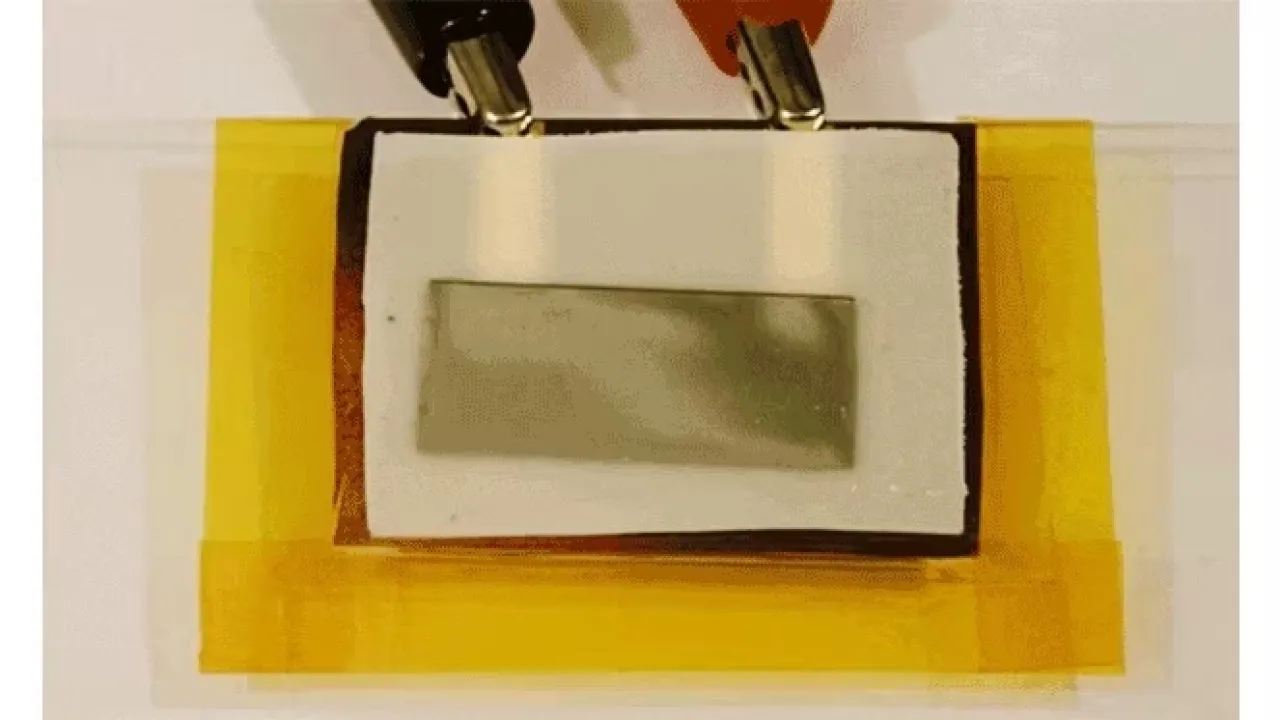
Self-destructible electronics is a Mission Impossible no more
In today's digital age, the increasing dependency on information makes everyone potentially exposed to privacy invasion and cyber security. Annual reports on tech-safety breaches are alarming, with stolen portable devices, laptops or mobiles, along with hacked hardware skyrocketing to 50% in the United States only. Bigger the picture, global is the risk of unwilling access to private lives or strategical documents, with everyone in the eye of the most dangerous of information violation. In such cases, an immediate ability to remotely destroy the sensitive parts, if it is not possible to regain them, would save us.
About
-By Valentina De Vincenti
In today's digital age, the increasing dependency on information makes everyone potentially exposed to privacy invasion and cybersecurity. Annual reports on tech-safety breaches are alarming, with stolen portable devices, laptops or mobiles, along with hacked hardware skyrocketing to 50% in the United States only.
Bigger the picture, global is the risk of unwilling access to private lives or strategical documents, with everyone in the eye of the most dangerous of information violation. In such cases, an immediate ability to remotely destroy the sensitive parts, if it is not possible to regain them, would save us.
Like a secret device hold up in the enemy territory, the self-destruction activates when the device goes beyond specified coordinates, or if exposed to light or even if any unauthorized person tries to open it forcefully. The owner can comfortably use an app to control the operation remotely with just using a smartphone.
What seemed a spy movie intriguing plot, it is now a reality. Muhammad Mustafa Hussain, Professor of Electrical Engineering, along with his team from the Integrated Nanotechnology Lab under the Computer, Electrical Mathematical Science and Engineering (CEMSE) Division, demonstrated an innovative approach for inbuilt remote destruction capability of high-performance silicon-based electronics in few 10s of seconds.
"Compared to the previous attempts which are inherently slow, need supply or stored chemicals and compromised performance, we show that in case of tempering, dislocation, light exposure - transient electronics like stolen or lost hard drives can self-destruct," explained Professor Hussain whose paper has recently appeared on Advanced Materials Technologies.
Hussain and his team started from Complementary Metal Oxide Semiconductors (CMOS) electronics, at the core of the nowadays state-of-the-art technology for silicon-based integrated circuits used in microprocessors, microcontrollers, static RAM, and other digital logic circuits. Where performance is pivotal, such as in security or defense application, CMOS based transient electronics for quick information management is the safest and essential way.
"Our findings is to approach transient electronics domain in a way that is pragmatic, fast and well integrated with most commonly used silicon substrates. A few methods have been previously reported for physical destruction, such as by dissolution, or using microfluidics as chemical etchants, as well as the complete shattering of glass-built chips remotely triggered with a laser. However, none of them serve the task efficiently," stressed Hussain.
Hussain and co-workers timely novelty, instead, lies in the pragmatic inbuilt mechanism which can be wirelessly started by the user. On a flexible polyimide substrate, the team placed a heater, an expandable polymer layer, and a highly thin silicon chip.
With such an integrated structure, the team proved that the CMOS components collapse thanks to a heating process, the so-called Joule Heating effect. When the heater electrode is powered up reaching the activating temperature value above 80°C, the expandable polymer layer increase around seven times than the original volume. Thus, the thin silicon chip at the heart of the system breaks irreversibly in less then 10 seconds.
The team successfully proved that the activation temperature could be modulated by using different polymeric supports, with a controlled heat only around the electrodes activating such process. Different design and size, in fact, can be implemented to change the destruction area for a total or partial cracking of the device as run tests have shown.
But the team went even further, demonstrating the system self-destruction capability by incorporating it with GPS, light and pressure sensors. A battery-powered electronic system with programmable heating actuation of the heating element is developed upon simulation through sensors.
"The next stage will be to demonstrate the destruction mechanism in the state of the art available electronics products such as hard disk, sim card, mobile phone and so on. Moreover, we would also be working on further reducing the destruction time to within few seconds", said Hussain.